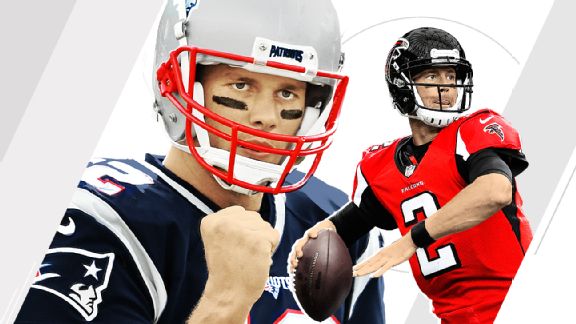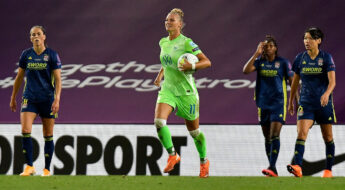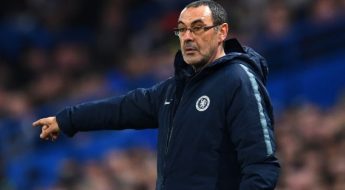Beating Tom Brady and Patriots involves using blueprint provided by Giants

Only one team has beaten coach Bill Belichick and QB Tom Brady in a Super Bowl.
The New York Giants did it twice, in Super Bowls XLII and XLVI. They beat the New England Patriots in different seasons but with relatively similar game plans. It didn’t matter that the Giants had different defensive coordinators (first Steve Spagnuolo, then Perry Fewell) or were fielding many different players. They limited Brady and the Patriots’ offense, ran the ball effectively and pulled out a pair of dramatic, low-scoring affairs.
There is a blueprint to success.
The Patriots are 4-2 in the sport’s biggest game during the Belichick-Brady era, with a chance to improve on that Sunday in Super Bowl LI when they play the Atlanta Falcons. Belichick and Brady are considered by many to be the greatest in history at their respective professions. They form a dynamic duo whose only Super Bowl kryptonite might prove to be Tom Coughlin’s Giants.
Or at least their game plan against the Brady/Belichick Patriots.
The Falcons might want to take a few pages out of those past Giants game plans on Sunday.
Every team takes its own shape, and these Patriots with Belichick and Brady may have evolved since their Super Bowl defeats. But they’re still quite similar to the teams from the 2007 and 2011 seasons that fell short of hoisting the Lombardi trophy. They have Brady. They have Belichick. They do lots of the same things offensively (quick, short passes; allowing their playmakers to make plays) and defensively (good at stopping the run, taking away the opposition’s best player). The game plan to beat them in this spot hasn’t changed much.
The Giants went into both Super Bowls against the Patriots planning to make life difficult for Brady. That was essential. And they were going to do it without applying extra resources.
“We wanted to hit Tom Brady as much as we can. But the plan was to always rush them with four [defenders] and play coverage,” said Chris Canty, the former defensive tackle and current host of ESPN Radio’s Hahn, Humpty & Canty show.
“But when we did decide to use pressure, blitzes, we wanted to make sure to use players you weren’t accustomed to seeing.”
They used this approach in both games, with the idea of coming off the edge and pushing Brady into the interior rush. The Giants had seven sacks combined in the two games, four of which came from Justin Tuck, a defensive end who often played on the interior.
“It was really the same thing both times,” said former defensive end and current BBC analyst Osi Umenyiora, who was on both Giants teams that beat the Patriots in the Super Bowl. “We felt we had the advantage up front. So the game plan defensively was to not blitz quite as much.”
The Giants viewed the Patriots with Belichick as the most prepared team in the league. It was imperative on the rare opportunities the Giants blitzed that they came from players and spots that Brady wasn’t expecting.
And even when the Giants didn’t get there to hit or sack Brady, they focused on affecting his inside throwing lanes.
“Coach Fewell always used the term ‘dirty pocket,’” said cornerback Prince Amukamara, a rookie thrust into a bigger role during that second Super Bowl when Aaron Ross left with an injury. “Definitely create a dirty pocket to where he’s not comfortable.”
Brady said passing against the Giants in Super Bowl XLVI was “like throwing in a forest.” Defensive end Jason Pierre-Paul batted down a pair of passes. Michael Strahan had a batted pass in the 2008 contest.
“That’s what we wanted to do. That’s what [Brady] does anyway,” Umenyiora said. “The edge rush doesn’t really bother him much. You need to have some really good interior rushers.”
For the Falcons, that means having the league leader in sacks, Vic Beasley, getting pressure off the edge and forcing Brady toward Atlanta’s best interior rusher, Grady Jarrett. Then they can rely on their offense to supplement their defense.
The Giants realized that keeping Brady off the field was the best way to slow down the future Hall of Fame quarterback. The fewer opportunities he had, the better off they were. It may sound like common knowledge, but it’s harder to execute.
Lost in the shuffle of Brady’s brilliance and the Patriots’ high-powered offensive glitter is that Belichick builds tough teams, especially his defensive fronts. Belichick is known for taking away the opposition’s top playmakers.

Sunday, Feb. 5 | 6:30 p.m. ET | Fox
• What you need to know
• FiveThirtyEight predictions
• Quiz: Who should you root for?
Wide receiver Plaxico Burress had two catches for 27 yards in Super Bowl XLII; wide receiver Victor Cruz had four catches for 25 yards in Super Bowl XLVI. Although both had key touchdown grabs, their production was limited.
“The only football we thought New England respected was physical football,” said former Giants offensive lineman Chris Snee, who started at right guard in both Super Bowl wins. “We had to be more physical. You go against the offense, but both defenses we played against were physical defenses. It kind of gets lost in the shuffle. I think that is kind of the case this year, too.”
Trying to match the Patriots score for score wasn’t a viable option for those Giants (especially in the 2007 season) and likely won’t be for the Falcons. New England scored the third-most points in the NFL this season and has the unflappable Brady.
The Falcons scored the most points this season, but trying to win that battle with these Patriots might not be prudent in the Super Bowl. The Giants’ Super Bowl wins over New England were by scores of 17-14 and 21-17. They beat the Patriots by outrushing them and winning in the trenches.
That was the plan.
“That was what we had to accomplish. We had to be able to run the ball somewhat, No. 1,” Snee said. “If Belichick went in saying he wanted to take something away, I don’t think he went in thinking, ‘We have to take away the run game.’
“He was confident in who he had. He had [defensive tackle Vince] Wilfork in the middle and inside ’backers who could stop the run. We knew coming in we would have to say, ‘We’re better up front than these guys, and we have to be able to run the ball.’ And by doing that, [Belichick] may have to change some things as the game goes along. Any time you get into that kind of game where they have to make adjustments, it’s to your benefit.”
Atlanta has the rushing attack (fifth in the NFL) with Devonta Freeman and Tevin Coleman to get that done. All they need to do is follow the Giants’ blueprint:
-
Keep Brady off the field and out of rhythm.
-
Pressure him with a four-man rush when he’s on the field.
-
Run the football.
“[The game plan] has to be the same because Brady is the guy. He’s the one on the field pulling the trigger,” Umenyiora said. “Belichick can’t come out there and play. It’s going to be the exact same thing. You’re going to have to get outside pressure forcing them into your inside rushers. If they can do that, they can have success.”
Easier said than done in the Super Bowl against Belichick, Brady and the Patriots.




